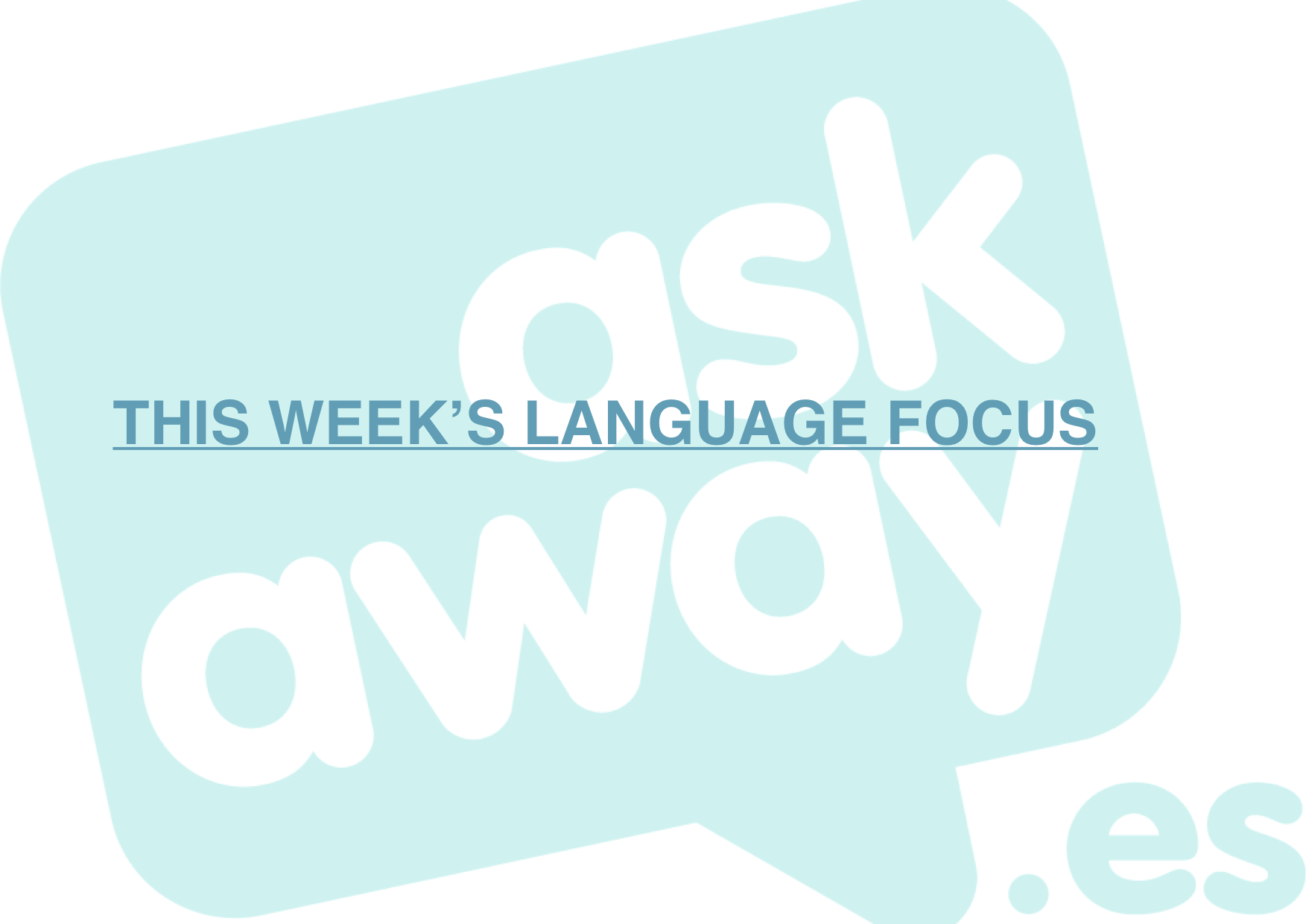[:es] How long does it take? How long does/did/will it take to ….. ? Example: How long does it take to get to Madrid? It takes about three hours by car. Example: How long did it take you to get here? It took me about thirty minutes. Example: How long will it take you to…
Tip of the week: Can/Could/Be able to.
Can/Could/Be able to Can: Expresses general ability in the present. Could: Expresses general ability in the past. Be able to: Expresses general ability in the past and present. Examples: I can play the guitar. I could play the guitar when I was a child. I’m able to play the guitar. I was able to play…
Tip of the week: Go back or Come back?
Go back v. Come back Go back: When you are moving away from the person you are speaking to. Example: I’m going back to Ireland next week (beacuse you are moving away from the listener). Come back: When you are moving towards the person you are speaking to. Example: I’m coming back to Valencia tomorrow…
Tip of the week: Job or Work?
Job or Work? Job is a regular noun. Work is a verb or an uncountable noun. Examples: Do you have a job? He has two jobs. Do you work for this company? I have some work to do in the garden.
Tip of the week: Both, either, neither.
[:es] Both-Either-Neither Both: This and that. Example: I can speak both English and Spanish. Either: This or that. Example: I can speak either English or Spanish if you prefer? Neither: Not this and not that. Example: I can speak neither English nor Spanish.
Tip of the week: Semicolons.
Semicolons Semicolons are used to connect two independent clauses that, though they could stand on their own, are closely related. Example: Call me tomorrow; I’ll have an answer for you by then. If there’s a coordinating conjunction beween the two clauses, e.g. ‘but’, or ‘or’, then use a comma instead. Example: Call me tomorrow, and…
Tip of the week: Less v. Fewer.
[:es] Less v. Fewer INCORRECT: I take less business trips now. CORRECT: I take fewer business trips now. INCORRECT: I have fewer rice than you. CORRECT: I have less rice than you. Rule: Use fewer for things that are countable. Use less for things that are uncountable. [:en] Less v. Fewer INCORRECT: I take less…
Tip of the week: Peek v. Peak v. Pique
[:es] Peek v. Peak v. Pique Peek: Taking a quick look at something. Example: She peeked into the room to see if he was there. Peak: Is the highest point of something. Example: He died at the peak of his career. Pique: Is to provoke or instigate something Example: The story piqued my curiosity. [:en]…
Tip of the week: Practice v Practise
[:es] Practice v Practise INCORRECT: I practice English every day. CORRECT: I practise English every day. Rule: Practise is a verb. Practice is a noun. Examples: They practise tennis on Saturdays. He has a dental practice in the city. [:en] Practice v Practise INCORRECT: I practice English every day. CORRECT: I practise English every…
Tip of the week: Into/In to
[:es] Into/In to Into indicates when something or someone ends up within or inside. Examples: Lindsey walked into the room. Please put the apple into the bag. In & To are individual words used to indicate other things or actions. Examples: Please log in to our website. I like to tune in to the classical…



